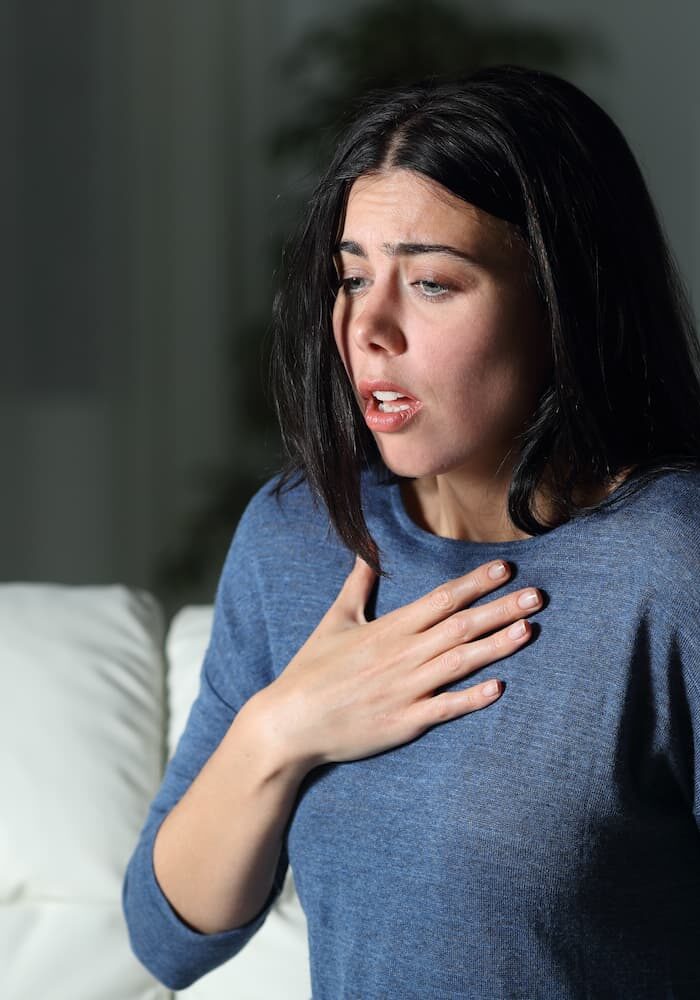Breathing Pattern Disorder
While many other breathing disorders and conditions are related to slow or laboured breathing, breathing pattern disorder involves 'overbreathing', leading to hyperventilation and other issues. Proper treatment can help restore an optimal breathing pattern over time.

What is breathing pattern disorder?
Breathing pattern disorder encompasses two specific conditions in which the amount you breathe goes beyond what your body needs:
Hyperventilation is one form of breathing pattern disorder in which breathing becomes rapid due to an exciting or stressful situation. Hyperventilation is often a natural reaction to a circumstance, but if breathing does not return to normal, this could cause long-term difficulties.
Dysfunctional breathing is often associated with cold weather, exertion, stress, and other triggering factors. When someone has dysfunctional breathing, they often breathe rapidly through their mouth, and have tension in their neck and shoulders, resulting in only using the upper chest to breathe. This breathing pattern can lead to tightness in the chest and throat, chest pain, and feelings of not having enough breath.
Symptoms of breathing pattern disorder
The symptoms of breathing pattern disorder may vary from person to person, but can include:
- Sighing and yawning often
- Air hunger – feeling like you need more air
- Discomfort due to breathing
- Disturbed sleep and trouble falling asleep
- Chest pains, tightness and tension
- Heart palpitations
- Feelings of anxiety or hypervigilance
- Fatigue and tiredness
- Tingling or pins and needles in the hands and feet
While not every person will display all of the above symptoms, they are an excellent place to start to figure out whether breathing pattern disorder is an underlying issue.
Causes of breathing pattern disorder
The causes of breathing pattern disorder can be a range of different factors, whether in isolation or together. Depression, anxiety, and stress are some of the most common potential causes of this condition. Beyond that, the use of alcohol, caffeine, nicotine, and even hormonal medications like progesterone can result in issues with your breathing patterns.
Other medical conditions can contribute to breathing pattern issues, such as asthma, pneumonia, and COPD. These conditions should be considered as a part of diagnosis, as the treatment of underlying medical conditions can help to restore breathing. Other short-term causes of breathing pattern disorder could include hormones, exercise, high altitude and a high temperature due to fever.

Treatments and investigations
Diagnosis and investigation of breathing pattern disorder depend on whether there is an underlying issue or not causing the condition. Diagnosis of other problems, like asthma or COPD through full lung function testing and reversibility testing, can help to resolve breathing pattern issues. The used of CO2 monitoring and peak flow monitoring may also be used.
Treatment for hyperventilation and dysfunctional breathing typically involves personal awareness of your breathing. You may be given control exercises to help you breathe normally, and you may be advised to make lifestyle changes to reduce your overall stress response. The course of treatment will depend entirely on the underlying cause of the issue.
Make an enquiry